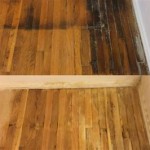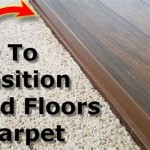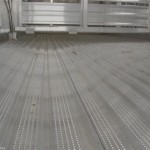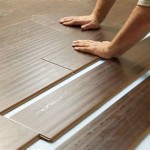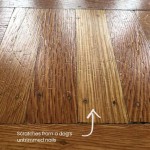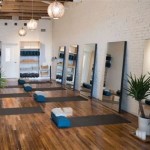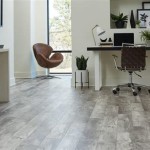Rubber Flooring: The Ideal Foundation for Workout Rooms
Rubber flooring has become a ubiquitous choice for workout rooms, gyms, and fitness centers, offering a compelling combination of durability, safety, and acoustic properties. Its widespread adoption stems from a comprehensive understanding of the demands placed upon flooring in these environments, where heavy equipment, repetitive impact, and hygiene concerns are paramount. This article explores the key characteristics of rubber flooring that make it an optimal solution for workout spaces, detailing its benefits and considerations for installation and maintenance.
The fitness industry has witnessed a significant evolution, with individuals increasingly prioritizing health and wellness. This trend has fueled the growth of both commercial gyms and home workout spaces. As a result, the demand for flooring solutions capable of withstanding the rigors of intense physical activity has also increased. Rubber flooring has effectively met this demand, replacing traditional options like carpeting and hardwood in many applications.
Rubber flooring, in its various forms, is generally manufactured from recycled or virgin rubber materials. Recycled rubber flooring often utilizes post-consumer tire rubber, contributing to sustainable practices. Virgin rubber, typically derived from synthetic sources, allows for precise control over material properties and aesthetics. Regardless of the source, the resulting product offers inherent shock absorption, sound dampening, and slip resistance.
The selection of appropriate flooring is critical for the safety and functionality of a workout room. It impacts user experience, equipment maintenance, and the overall ambiance of the space. Rubber flooring's ability to address these diverse requirements has solidified its position as the preferred material for creating a safe and effective workout environment.
Durability and Impact Resistance
One of the primary advantages of rubber flooring is its exceptional durability. Workout rooms are subject to significant wear and tear from dropped weights, heavy machinery, and constant foot traffic. Unlike traditional flooring materials that may crack, dent, or tear under such stress, rubber flooring is designed to withstand high-impact forces without sustaining lasting damage. This resilience translates to long-term cost savings by reducing the need for frequent repairs or replacements.
The density and composition of the rubber material contribute significantly to its ability to absorb impact. High-density rubber tiles or rolls can effectively cushion the impact of heavy weights, preventing damage to the subfloor and minimizing the risk of injury to users. The inherent elasticity of the rubber allows it to deform under pressure and then quickly recover its original shape, maintaining its structural integrity over time.
Furthermore, rubber flooring is resistant to punctures and tears, further enhancing its durability. This is particularly important in areas where equipment may be dragged or moved frequently. The robust nature of the material ensures that it can withstand these abrasive forces without compromising its functionality or appearance.
The longevity of rubber flooring is also influenced by its resistance to chemicals and solvents. Many cleaning agents used in workout rooms contain harsh chemicals that can degrade other flooring materials. Rubber flooring, however, can withstand regular cleaning with standard cleaning solutions without experiencing discoloration or damage.
The ability of rubber flooring to absorb impact forces also benefits the surrounding structure. By minimizing vibrations, it reduces the risk of damage to walls, ceilings, and other structural elements. This is particularly important in multi-story buildings where noise and vibration can be a significant concern.
Safety and Ergonomic Benefits
Safety is paramount in any workout environment, and rubber flooring plays a crucial role in mitigating the risk of injuries. Its inherent slip resistance provides a secure surface for users, reducing the likelihood of falls and slips, even when wet. The textured surface of many rubber flooring options further enhances traction, particularly during high-intensity workouts.
The cushioning effect of rubber flooring also contributes to user comfort and reduces the risk of joint injuries. By absorbing impact forces, it reduces the stress on ankles, knees, and hips, allowing users to train for longer periods with less fatigue. This is particularly beneficial for individuals who engage in high-impact activities such as running, jumping, or weightlifting.
The ergonomic benefits of rubber flooring extend beyond impact absorption. Its resilience provides a comfortable surface for standing and performing floor exercises. Unlike hard surfaces that can cause discomfort and fatigue, rubber flooring provides a supportive and forgiving base for various activities.
The non-porous nature of many rubber flooring options also contributes to improved hygiene. This prevents the absorption of sweat, bacteria, and other contaminants, reducing the risk of infections and odors. The ease of cleaning further enhances hygiene, allowing for regular disinfection to maintain a healthy workout environment.
The use of low-VOC (volatile organic compound) rubber flooring options contributes to improved air quality within the workout room. This is particularly important for individuals with allergies or respiratory sensitivities. By minimizing the release of harmful chemicals, low-VOC rubber flooring creates a healthier and more comfortable workout atmosphere.
Acoustic Properties and Vibration Dampening
Workout rooms can be noisy environments, with the clanging of weights, the thumping of treadmills, and the sounds of music or instruction. Rubber flooring offers excellent sound-dampening properties, reducing noise levels and creating a more pleasant workout environment. This is particularly beneficial in multi-story buildings or shared spaces where noise can be disruptive.
The sound-absorbing qualities of rubber flooring are attributed to its density and elasticity. It effectively absorbs sound waves, preventing them from reflecting off surfaces and reverberating throughout the room. This reduces echo and improves speech intelligibility, making it easier for users to hear instructions or communicate with each other.
In addition to sound dampening, rubber flooring also effectively reduces vibration. This is particularly important in areas where heavy equipment is used, such as weight rooms or cardio areas. By absorbing vibrations, rubber flooring minimizes the transmission of noise and prevents damage to surrounding structures.
The reduction of vibration also contributes to improved equipment stability. By providing a stable base for machines, rubber flooring prevents them from shifting or vibrating excessively during use. This enhances safety and extends the lifespan of the equipment.
The acoustic benefits of rubber flooring extend beyond noise reduction. By creating a more pleasant and focused environment, it can enhance user motivation and performance. A quieter workout room allows users to concentrate on their training without being distracted by excessive noise.
In summary, rubber flooring offers a comprehensive solution for workout rooms, addressing the critical requirements of durability, safety, and acoustic performance. Its ability to withstand heavy impact, provide a slip-resistant surface, and dampen noise makes it an ideal choice for creating a safe, comfortable, and effective workout environment. When selecting rubber flooring, factors such as thickness, density, and surface texture should be considered to ensure optimal performance and longevity.

Best Workout Flooring For Home Commercial Exercise Rooms

How To Choose Home Gym Flooring Garage

Home Commercial Weight Room Gym Flooring Ideas Rolls Tiles Mats

Home Gym Flooring Commercial

What S The Best Flooring For A Home Gym America

Contemporary Home Gym Flooring Rubber And Carpet Tiles Gray Walls Room At Workout

Non Toxic Low Voc Gym Flooring Compared My Chemical Free House

Best Home Gym Workout Room Flooring Options Sebring Design Build Basement

Best Types Of Flooring For A Home Gym Forbes

35 Best Home Gym Floor Ideas To Transform Your Space In 2024 Flooring Room At Basement
Related Posts

